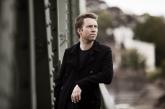 Leif Ove returns to the stage this autumn with a solo program featuring works by Sibelius, Chopin, Debussy and Beethoven. The recital tour takes Andnses across Europe and the States including performances in Helsinki, Rome, Dublin, Copenhagen, Vienna, Turin, Washington, New York, San Francisco, Vancouver, Moscow, Lisbon, Tolouse, Hamburg and Lyon before returning home to Norway for a final concert at the Oslo Opera House on 13 December
Leif Ove returns to the stage this autumn with a solo program featuring works by Sibelius, Chopin, Debussy and Beethoven. The recital tour takes Andnses across Europe and the States including performances in Helsinki, Rome, Dublin, Copenhagen, Vienna, Turin, Washington, New York, San Francisco, Vancouver, Moscow, Lisbon, Tolouse, Hamburg and Lyon before returning home to Norway for a final concert at the Oslo Opera House on 13 December
“After “The Beethoven Journey,” doing all those big pieces all the time, it was appealing to think of doing a program consisting of shorter pieces, though still making sense of them by grouping selections together. On paper, this program might look arbitrary, but I think the way they are grouped makes sense of them and also makes for a nicely contrasted program.
I am on a mission right now to focus attention on the piano music of Sibelius. I’m the first to admit that his piano works are of uneven quality, but his best pieces are really haunting, and I’m really enjoying playing them on this program. The music conjures up Nordic images, though it’s hard to explain why. They have a deep feeling for nature, and even if most pieces are intimate they give the feeling of vast landscapes. In terms of their sound, I always think in orchestral terms when I play them. They call for lots of pedal, and the blend is very important – blends of different colors, different ideas.
After the Sibelius, the program turns very classical with one of the middle period sonatas of Beethoven – Opus 31, No. 3. This is such a rich piece – a good humored, funny and highly energetic piece. It’s often nicknamed “The Hunt,” because of the fun last movement, which gives you the feeling of being on horseback. The minuet has one of the loveliest melodies I can think of, and the scherzo is just so funny. I had long underrated this piece, but now find it to be one of the most wonderful sonatas.
Having started the programs with Sibelius, whose works are so rich in orchestral colors, the second half is decidedly more pianistic in nature. The Debussy set reveals two very different sides of this composer. The first work shows his ability to evoke nature and places, in this case an evening in Granada. Such a lovely work with its unmistakably Spanish sounds! Then I will play three of his Études, which were his last works for solo piano and not amongst his best-known pieces. These studies are really something – very difficult, very hard to play, but also amazing. It’s incredible how taking one technical aspect of piano playing as a limitation and seeing what he could do about that made him so creative. The three I will play deal individually with chromaticism, arpeggios and octaves. What he can do with that is unbelievable. With some great artists, giving them limitations became such a source of creativity!
And then finally, we turn to Chopin. I’ve put together a group of short pieces, but then end it with his fourth ballade, a work that I have long been fascinated by. When I was twelve I got a cassette tape of the four Chopin ballades and got totally obsessed. They rank amongst the greatest piano music there is. This fourth ballade has a particular place in my heart. Just unbelievable what he says in twelve minutes. Such an incredibly heartbreaking piece! I sometimes have problems stepping back from it, which you need to do as a performer. Playing that theme at the beginning of the fourth ballade is almost too emotional! You need some distance as a performer, and I hope that doing several concerts now will help me get that distance. It’s unbelievable how that theme, so full of sorrow and rich harmonies, turns into something of total despair at the end. This is one of the most dramatic pieces he wrote, one of the richest in terms of voices, colors and harmonies. When people say that Chopin wrote music with a beautiful melody in the right hand and accompaniment in the left, I want them to study the Fourth Ballade – you see a web of voices and polyphony and his love of Bach. Truly a remarkable piece – I always wanted to do this piece as an ending to a program!”